Owls have fascinated people for centuries. They’ve come to embody wisdom and farsightedness, starting in ancient folklore, and carried into our time. Here are the basics about these fascinating birds of prey, including some fun facts, and how we can help them in the wild.
What Type of Bird is an Owl?
Owls are birds of prey, meaning that they kill and eat other birds, fish, and small rodents for food.
What are the Different Types of Owls?
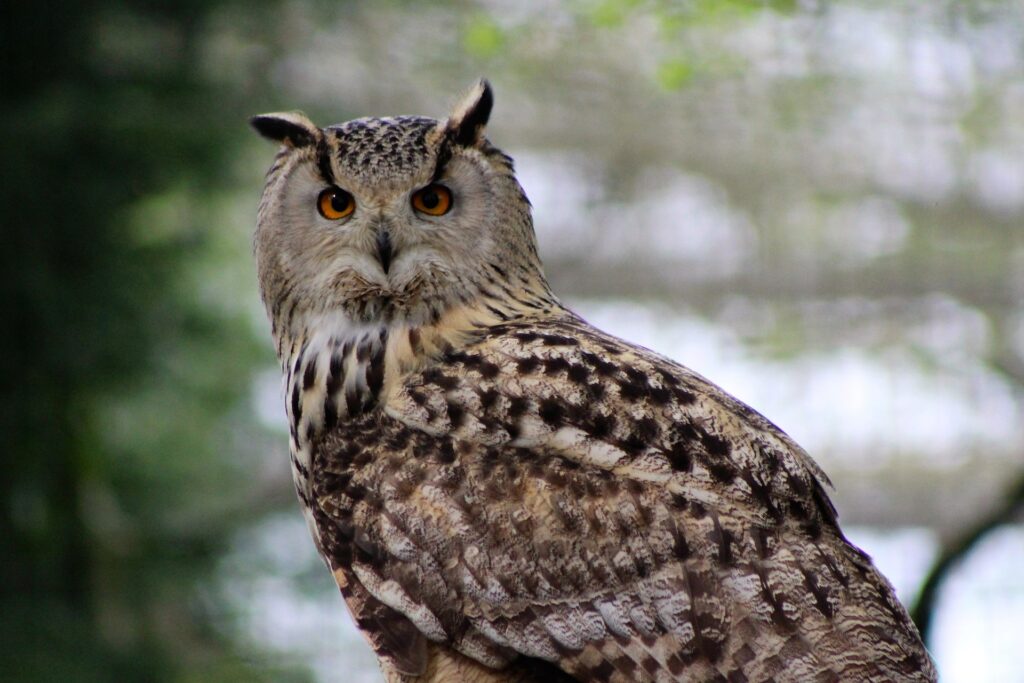
Owls belong to the Strigiform bird group, which contains 250 owl species. These species are broken up into two families: barn owls and true owls. The main difference is that true owls have round faces, and barn owls’ faces are heart shaped. The vast majority (approximately 230) of owls in the world are classified as true owls.
Of the 250 owl species, there are only a handful of them in North America, including:
- Barn Owl
- Barred Owl
- Boreal Owl
- Burrowing Owl
- Eastern Screech-Owl
- Elf Owl
- Flammulated Owl*
- Great Gray Owl
- Great Horned Owl*
- Long-Eared Owl*
- Northern Hawk Owl
- Northern Pygmy-Owl*
- Northern Saw-Whet Owl*
- Oriental Scops-Owl
- Short-Eared Owl
- Snowy Owl
- Spotted Owl*
- Western Screech-Owl*
- Whiskered Screech-Owl
*Owls found in the Big Bear area.
Are All Owls Nocturnal?
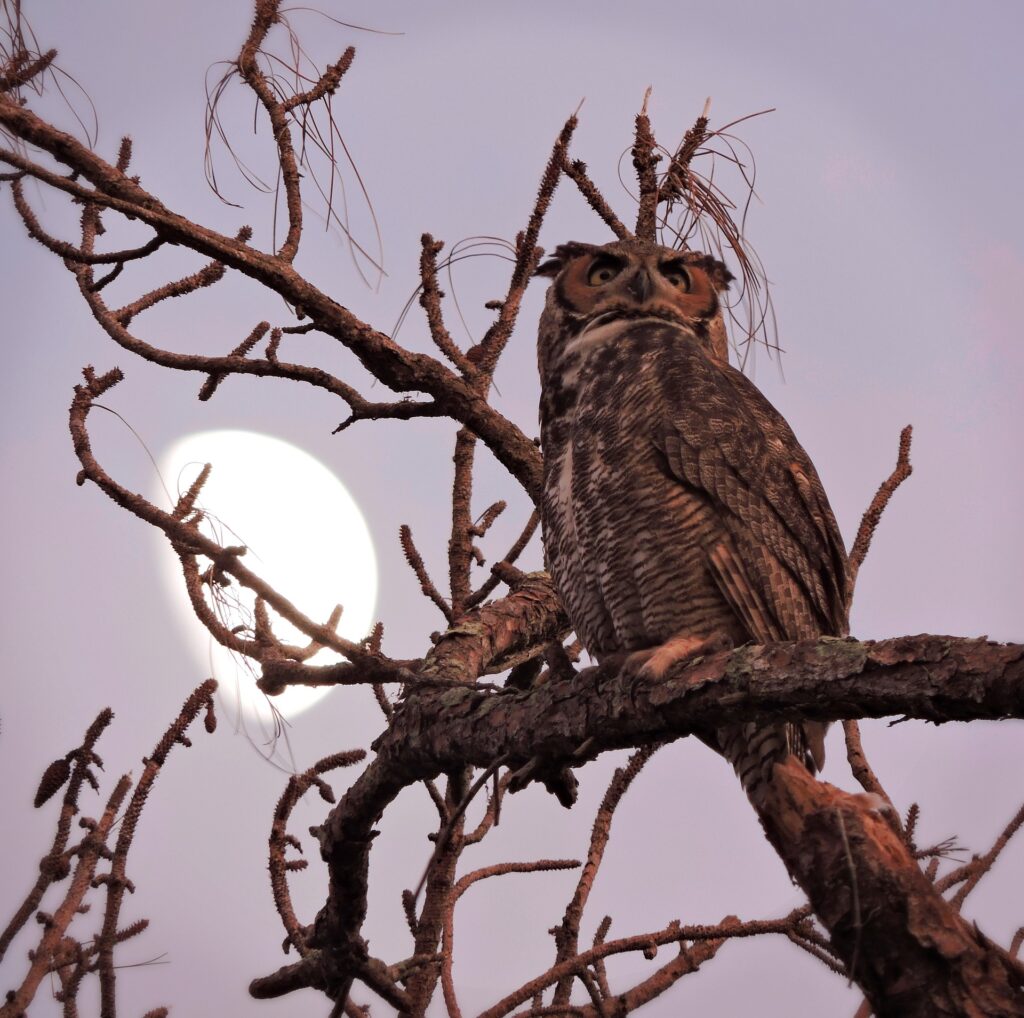
Most owl species are nocturnal, meaning they hunt at night and sleep during the day. In fact, only two owl species (the Northern Hawk Owl and the Northern Pygmy Owl) are diurnal, meaning they’re active during the day. Still others, like the Snowy Owl and Great Horned Owl, are crepuscular, meaning their most active times are dawn and dusk.
Where Do Owls Live?
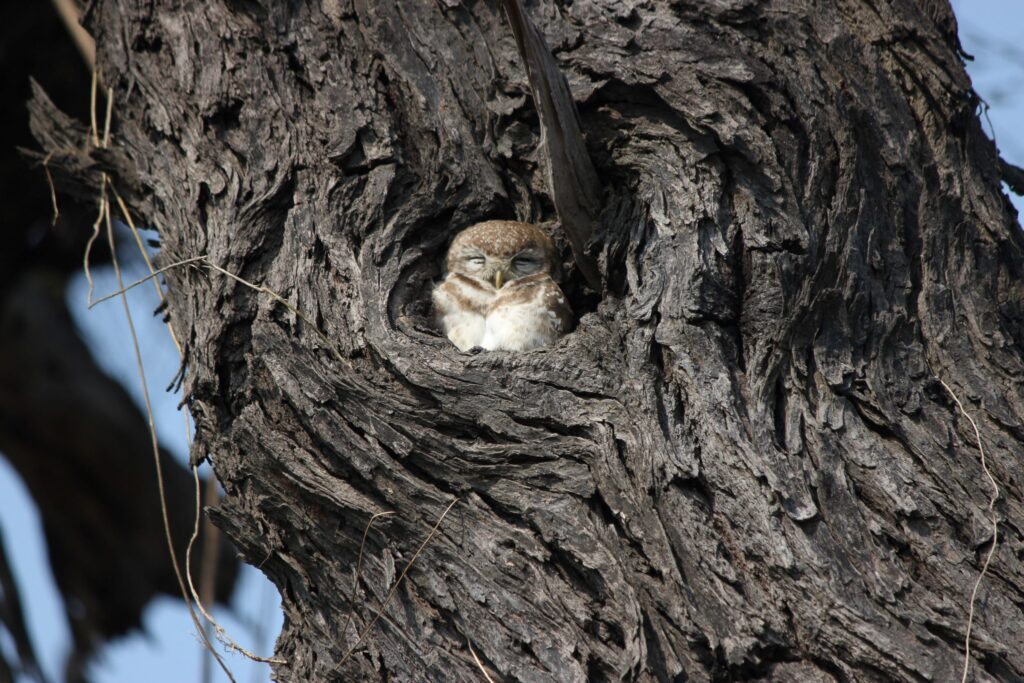
On the large scale, owls can live in virtually any type of environment, from dense forests to vast deserts. It really depends on the species of owl. Different types of owls may choose to make their home in a hollowed-out log, tree, cactus, bush, shrub, tree trunk, hole in the ground, or even an abandoned nest. Some, like the aptly named Barn Owl, build a home in a barn, or the upper rafters of a house or building. And others, like Barn Owls and Screech Owls, will take up residence in owl houses and roost boxes.
What Do Owls Eat?
- Birds
- Rabbits
- Squirrels
- Voles
- Fish
- Mice
- Lizards
- Frogs
- Snakes
- Insects
How Do Owls Hunt?
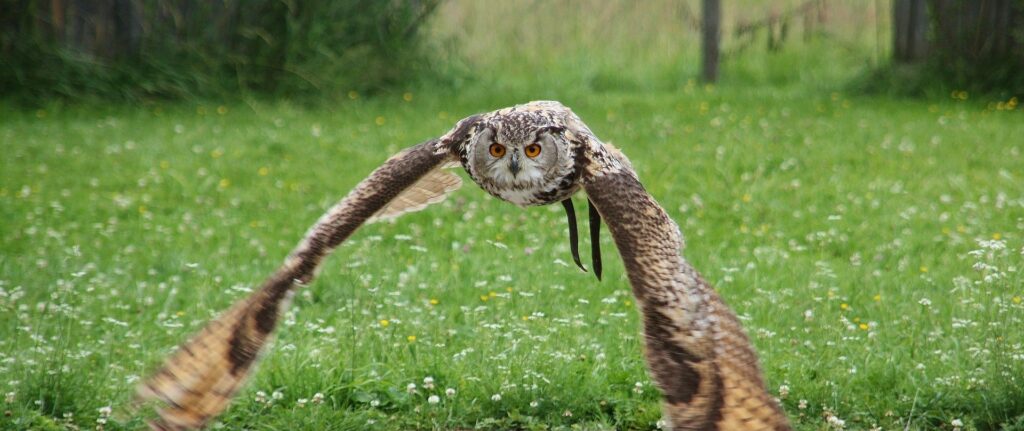
Owls are expert hunters. Their keen eyesight and deft movements help them descend on their prey quickly and quietly. As a result, some types of owls like to hunt from a low perch, while others like to swoop down on prey from a great height. And an owl’s wingspan allows for smooth gliding, while their sharp talons help hook their prey. And the feathers on their wings muffle the sound of air flow, allowing them to silently descend on unsuspecting prey.
Fun Owl FAQs
Listen to a sampler of owl sounds:
- Along with their characteristic hooting, owls make a variety of vocalizations, including screeches, hisses, yelps, whistles, and even barks!
- Owls can rotate their necks up to 270 degrees.
- Most owls prefer to roost alone, but a few (like the Long-Eared Owl ) prefer a communal roosting spot.
- Elf owls are the smallest owl species in the world, with a maximum height of six inches and weighting less than an ounce and a half.
- Although not always a hundred percent accurate, an owl’s eye color can be a helpful method for determing when they are most active: dark brown or black means the owl is nocturnal, orange eyes mean they’re crepuscular (active at dawn and dusk), and yellow eyes denote a diurnal (active during the day) lifestyle.
- Female owls will only respond to mating calls from owls of the same species.
- A group of owls is called a “parliament.”
- Barn owls eat about 1,000 mice every year.
- Certain owls hunt other owls: for example, Great Horned Owls often hunt Barred Owls.
How Can We Help the Owls?
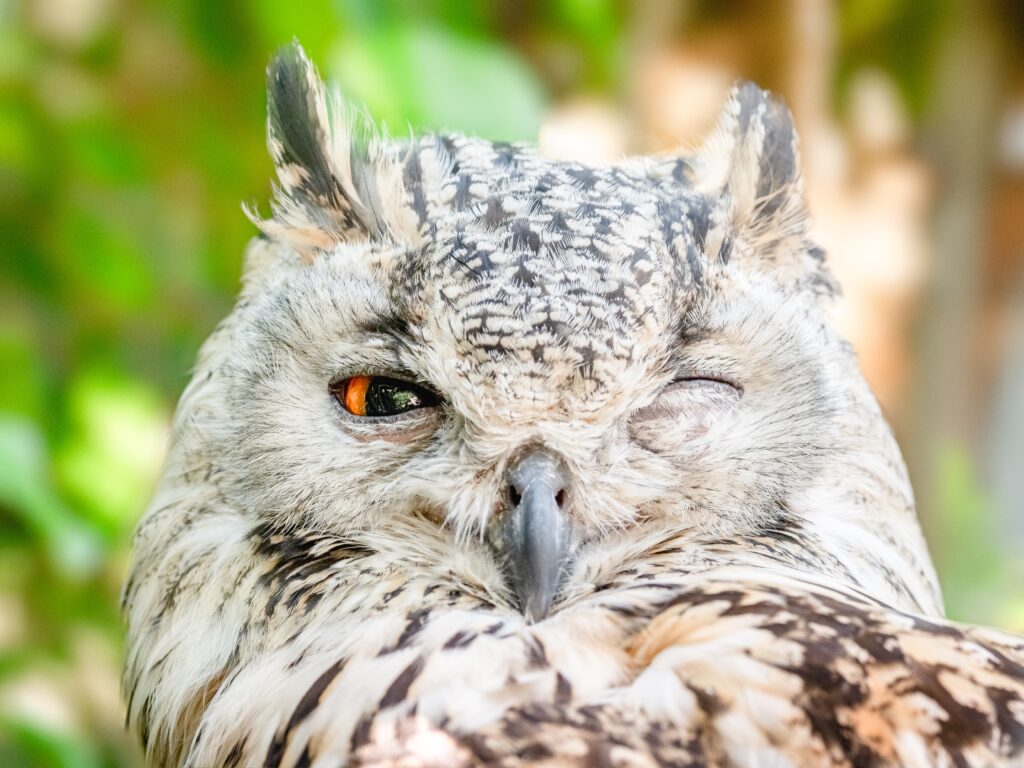
Owls, like many birds, are currently facing threats such as habitat loss and climate change. Some, like the Northern Spotted Owl, are even considered threatened species. Luckily, there are quite a few ways we can help the owl population.
Get involved:
Offer safe habitats:
Keep them safe:
- Prevent window collisions by turning off unused lights at night.
- Keep cats indoors.
- Avoid using rat poison.
Read to learn more:
- Sibley’s Owls of North America
- Owls of the Eastern Ice: A Quest to Find and Save the World’s Largest Owl

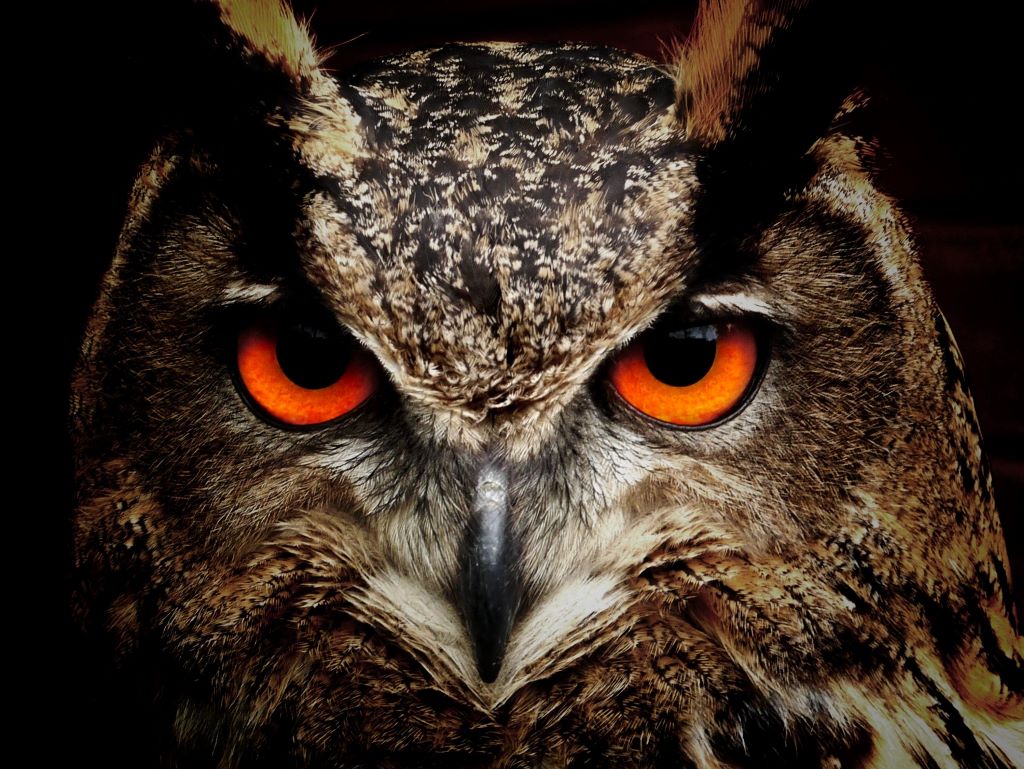

4 comments
Great info on owls. Yellow eye daytime hunters and brown eyes nocturnal hunters.
This was so informative. Thank you for a beautiful article.
Lots of inaccurate info here. Some of the species listed are not native to North America and the generalization of eye color indicating diurnal or nocturnal is not accurate.
Hi William,
Thanks for your feedback. We have updated our Northern Owl list and clarified the accuracy of using eye color as a method for determining activity. We appreciate your help keeping the birding community well informed.